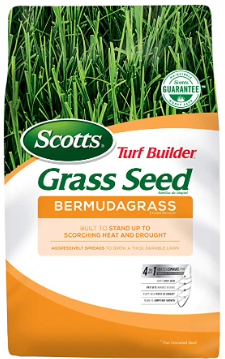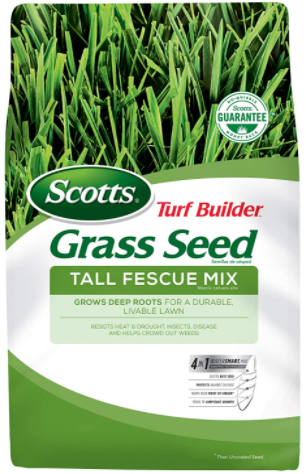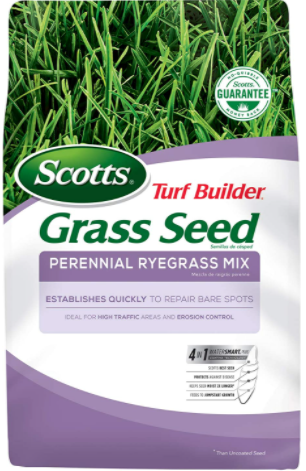- Popular Types of Bermuda Grass Explained - April 21, 2022
- When to Mow New Grass - April 18, 2022
- Best Troy Bilt Push Mower: How to Find The Right One - April 25, 2021
The family lawn is the place where warm and sunny memories are made. It is the place where kids run, jump, and roll around.
It is the place where adults retreat for outdoor cooking and casual gatherings with friends. And if you are a dog owner, it is also the place where your beloved pooch shows its wild side.
Let’s just face it, dogs are tough on grass lawns. It’s their play place, it’s their lounging area, and it’s their bathroom.
We all love this space and want to enjoy it together, but how can this happen when a certain member of the family is doing everything in their power to destroy it?
Fortunately, there’s no need to get frustrated or send Fido away. Everyone in the family can enjoy the great outdoors together again, and simply by growing the perfect grass that is the best grass for dogs.
Types of Grass
There is a multitude of grass types available for lawns, but only a select few are hardy enough to withstand the rough and tough treatment a fenced-in dog will give them. Let’s look through each of these closely.
We will spend some time discussing what each type does best and what it doesn’t do well. The thought is, once you have all this information gathered and organized, you will be able to decide which type of grass is best for you, your location, and your dog.
Bermuda Grass
The name of this type of grass hints at its pedigree. Bermuda grass is a type of grass that thrives in warm, humid, and sunny places (Bermuda). It is also a very hardy grass that can tolerate drought, sun, and a roughhousing dog.
Pros:
- Thrives in warm and sunny climates
- Needs some watering but not too much
- Tolerates drought conditions well
- Heals and regrows rapidly
Cons:
- Does not tolerate colder climates well
- Requires frequent mowing
- Needs plenty of sunlight
Purchasing Options
Try a bag of Bermuda Grass to rescue your lawn.
Best Suited For:
With all these facts taken into consideration, Bermuda Grass is best suited for lawns that are in warmer and sunnier areas.
Homeowners that put this grass type in their yard should be prepared to mow it often because it grows so rapidly. However, this rapid growth is a good thing when considering the damage a dog can do to a lawn.
Fescue
This type of grass is actually a group of grasses. There are many different varieties of Fescue grass on the market so everyone should be able to find a variety that works for their lawn.
Because it has a nature that is highly moisture absorbing, it is an excellent choice of grass for dogs. This is especially true for the big breeds who urinate more in volume and frequency.
Pros:
- Tolerates shade well
- High moisture absorbency
- Various types that suit different climates and soil conditions
- Low maintenance
- Deep running root system
Cons:
- Not ideal for rolling
- When set in very wet conditions it can gather pests
Purchasing Options:
A bag of Fescue seeds is a great way to get your yard back.
Best Suited For:
Because Fescue Grass comes in a wide variety, it is suited for almost any lawn. It can handle a wide variety of climates and soil conditions and still remain sturdy enough to withstand an unruly pup.
Kentucky Bluegrass
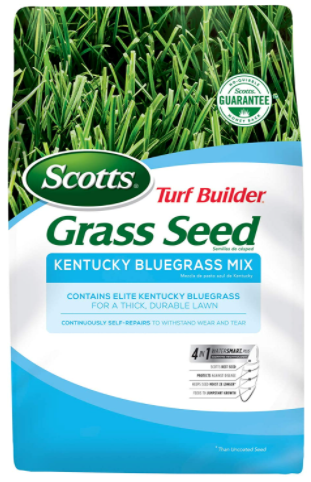
If you want lush, thick, and hardy grass in your yard, then Kentucky Bluegrass is what you need. This type of grass not only looks good but holds up to a lot of trampling.
Pros:
- Tolerates shade well
- Tolerates cold climates well
- Tolerates warm weather well
- Has a rapid growth rate
- Recovers quickly after being trampled
- Has an aesthetic appeal
Cons:
- Seeds require a great deal of water for growth
- Only certain variants are drought tolerant
- Purchasing Options:
Purchasing Options
Try seeding your yard with a Kentucky Bluegrass mix.
Best Suited For:
Kentucky Bluegrass is a grass type that offers wide appeal. Since it grows well in both cold and warm climates, it can be used by homeowners in many different latitudes and climates.
Combine its toleration of varying climates with its lush, beautiful look and its hardiness and you have what may be the ultimate grass type for dog owners.
Perennial Rye
This type of grass will sprout up quickly and develop a good root system that helps it retain water for dryer times and keep it healthy and hardy in spite of large amounts of foot traffic. It is a soft and lush grass for dogs to play in and can tolerate their urine amazingly well.
Pros:
- Tolerates direct sun well
- Can tolerate some shade also
- Tolerates colder climates fairly well
- Tolerates warm weather
- Tolerates animal traffic
- Tolerates dog urine
Cons:
- Requires watering and fertilization to keep up its good looks
- Does not tolerate drought conditions well
Purchasing Options:
Perennial Ryegrass can be purchased in seed form for a reasonable price.
Best Suited For:
Perennial Rye is designed for areas that get plenty of sunlight and have mild climates, not too hot or too cold. While it is a beautiful and lush grass, it does take some work to keep it looking its best. If you are an avid gardener, then you will appreciate this grass and enjoy working with it. If, however, you don’t want to deal with a lot of upkeep, this may not be the best grass for you.
Zoysia
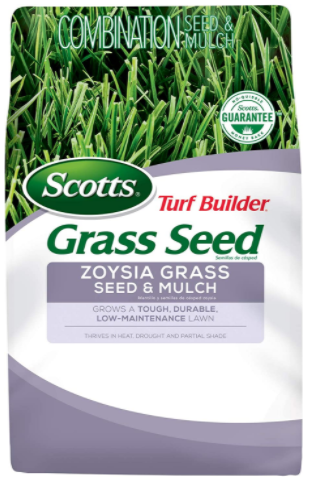
Zoysia is the grass you would choose if you want your pup to feel luxurious and pampered. This grass is quite beautiful to see and touch. Amazingly, it is also a hardy option for areas that are drought-prone or for dog owners.
Pros:
- Looks beautiful
- Feels luxurious
- Drought tolerant
- Tolerates warm climates
- Tolerates moderate shade
- Extremely durable when the root system has developed
- Low maintenance
Cons:
- Root system takes years to get established
- Needs soil with excellent drainage
Purchasing Options:
You can purchase Zoysia in seed form or as sod plugs. To find what works best for you, talk to someone at your local garden supply store.
Best Suited For:
While Zoysia is a lovely option that looks beautiful, feels beautiful, and handles moderate amounts of traffic, it is best suited for those who are patient.
If you already have a dog destroying your lawn, Zoysia is not going to help for another few years when its root system has been established.
This particular grass is going to work best for those who don’t currently have a dog but plan to get one several years down the road. If you plan for things like that, then plant some Zoysia as soon as possible so it can be well established before you bring home the new puppy.
Artificial Turf
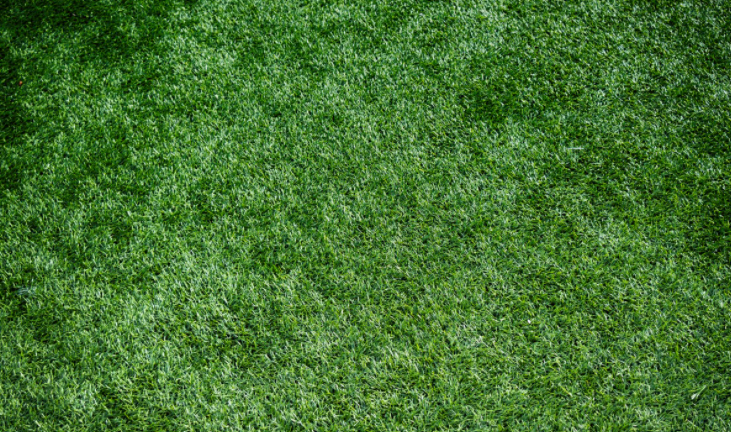
This is a choice for when live grass gets to be too much. It requires little maintenance while still offering a great place for dogs to play.
Pros:
- Requires less maintenance
- Can be found in eco-friendly materials
- Easily cleaned
Cons:
- It can get hot when it is sunny
- It can get smelly if it is not cleaned well
FAQs
Answer: Dogs have animal instincts and you really cannot take that away from them completely. However, there are a few things you can do to encourage less destruction. Let’s take a look at them and find out if any of them will work for you.
• Clean Up After Your Dog
Since urine and feces contain nitrogen that can eventually destroy grass, it is a good idea to clean up after your dog does its business. Water down any areas where your dog has peed and pick up any poo you find. Not only will this help you maintain a healthy lawn, but it will also be safe for bare feet in the summer.
• Create an Area for Your Dog
If you feel it’s necessary to take extra precautions to preserve your grass, you may consider setting apart an area exclusively for your dog. With a special play place, your dog can feel free to dig and forage to its heart’s desire. Just be sure to keep the area clean, safe, and large enough to suit the needs of your dear pup.
• Train Your Dog to Play in the Entire Yard
This is exactly the opposite of limiting your dog’s play to a certain allotted area. If you don’t feel like your dog would enjoy being cut off from the yard, then encourage it to use the entire yard. The motivation behind this is that it will keep your dog from constantly trampling or peeing on the same area until it destroys the vegetation.
If your dog is free to use all parts of the yard, this could be an effective way to keep your grass healthy.
• Encourage Your Dog to Stay Hydrated
It might seem counterintuitive to encourage your dog to drink more since this will cause it to pee more, and the nitrogen in urine is what kills grass. But, when a dog drinks more, it actually dilutes the nitrogen in the urine, making it less damaging to your grass.
• Keep Your Dog Off Wet and Treated Grass
If your dog tramples through wet grass, it will create more damage than when it is dry. If your dog tramples through recently treated grass, it could cause your dog some harm. So, do all you can to avoid letting your furry friend loose in either of these situations.
Answer: Now that you realize it is possible to have a lawn that can both look good and treat your pet well, you probably want to know some practical steps to get started.
So, let’s break this down and discover how you can have the lawn of your dreams and your dog’s dreams too.
• Mentally Prepare
Taking care of a lawn is hard work. Taking care of a dog is also hard work. Recognize that getting your lawn in order and keeping it in order will take time and energy. Remember to stay focused on the big picture – your goal of a beautiful and functional yard for the entire family.
• Pick Out Your Grass Type
We have already covered the best types of grass for dogs. Now you need to decide which type will work best for your specific yard, climate, soil, and dog. If you need more help deciding between the various types of grass, Turfandtill.com offers a great selection of articles comparing grass types.
• Get Your Lawn Ready
Once you have the grass picked out, you will need to make sure your lawn’s soil is ready for it.
• Rake the soil
• Remove any trash, weeds, stone, or debris
• Check the pH of your soil
• Change your soil’s pH level if needed
• Plant the Grass
This is something you can do yourself with a little research, or you can hire a professional landscaper. If you do it yourself, here are some videos to help with your research.
• How to Lay Turf
• How to Plant Grass Seed
• Water Your Lawn
It is important to keep your lawn hydrated, especially after planting grass. The roots need water to help them grow deep and get established. The best way to do this is to water infrequently but deeply. Here are a few videos to help you understand how to water your new lawn.
• How to Water Newly Laid Sod
• How to Water New Grass Seed
Answer: If you are really serious about creating a beautiful and healthy lawn, you are going to need some tools to help along the way. Let’s look at a few items and what they can do to assist you.
• Aerator
When the soil in your yard becomes compressed and compacted, it is more difficult for water to get to the roots of the grass. If this is the case with your lawn, you need an aerator to loosen up the soil and give those thirsty roots a chance to drink.
• Why, When, and How to Aerate Your Lawn
• How to Find the Best Lawn Aerator
• Fertilizer
This will give your lawn the nutrients it needs to grow well. To properly fertilize your lawn, you may want to invest in a soil thermometer also. Remember that your family and furry friends will be in contact with your lawn, so choose a fertilizer that is effective but safe.
• How to Fertilize Your Lawn
• Spreader
This handy tool will certainly help you during the seeding and fertilizing processes. You simply push and let it do all the hard work.
Conclusion
There doesn’t have to be an either-or choice when it comes to having a beautiful, healthy lawn and a dog. You can have both!
This article was written to show that there are actions you can take, products you can buy, and help you can find that will give you access to a lawn where your friends, family, and furry companion can enjoy the great outdoors together. Hopefully, you can take all this information and make a lovely little place for warm and sunny memories.


